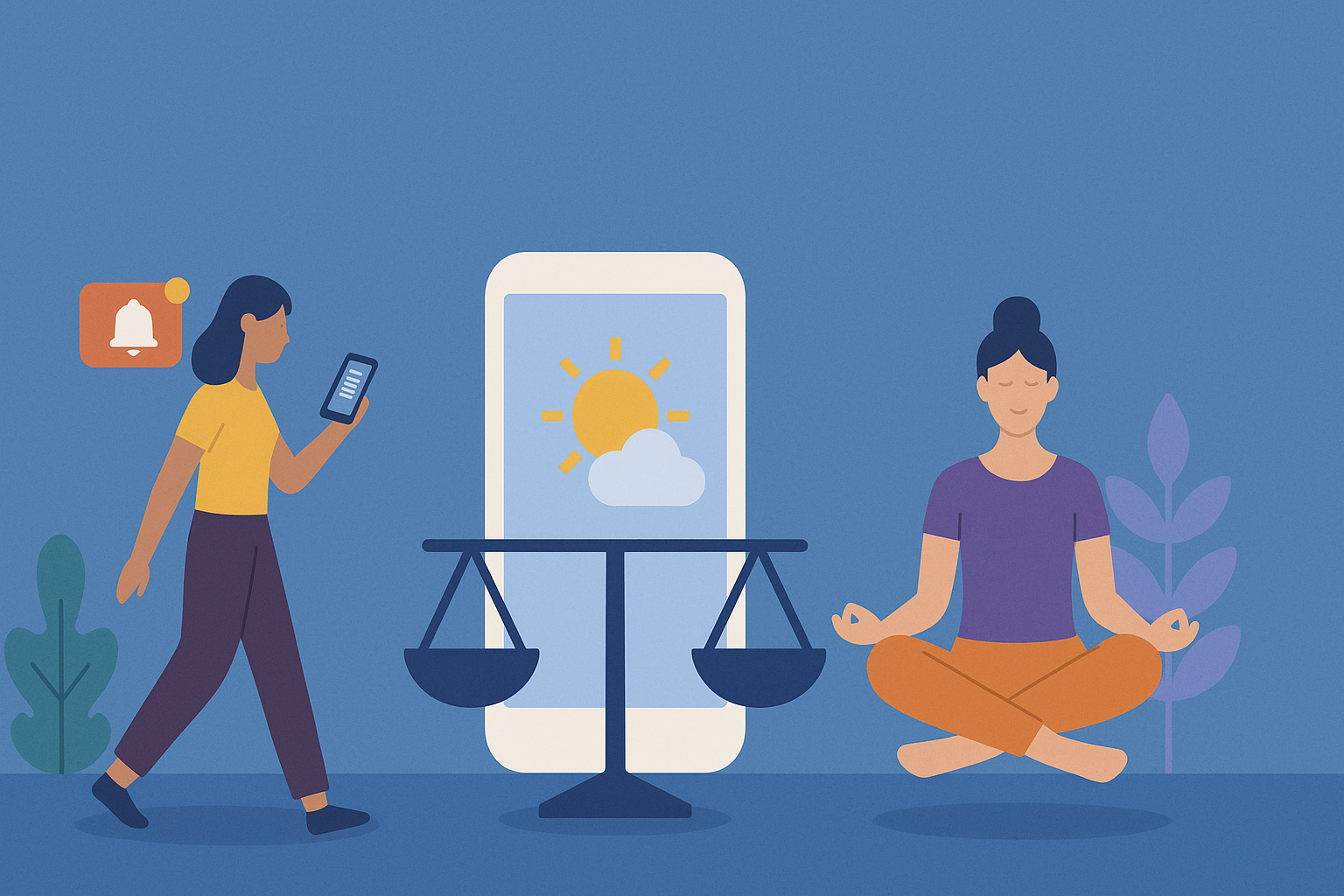The Next Shift in UX: Designing for Digital Life Balance.

Globally on average we check our phones about 100 times per day. Notifications buzz, timelines refresh, inboxes refill and the self initiated pick-ups. But here's the real question: When was the last time a digital product left you feeling energised instead of drained?
For years, product teams have been rewarded for one thing: engagement. More clicks, more time on site, more active users. And as UX designers, we've played our part — crafting seamless flows and sticky experiences.
But there's a cost. Doomscrolling, burnout, notification fatigue. We've built products that win attention but often lose something more important: balance.
Why This Matters Now
The attention economy is reaching its limits. People are becoming more conscious about how they spend time online. Apple's Screen Time and Google's Digital Wellbeing features are a sign of the shift — users are asking for tools that help them manage their relationship with technology, not just feed it.
This presents an opportunity: the next wave of UX design won't be measured purely in clicks and minutes. It will be measured in trust, wellbeing, and long-term loyalty.
A New Paradigm for UX
I believe we're entering a new chapter:
- Old paradigm → Engagement = success
- New paradigm → Balance = success
Healthy digital experiences don't just pull people in; they let them step away without guilt. They leave people feeling in control, not controlled.
I frame this shift around three pillars of Digital Life Balance in UX:
- 1. Clarity – Reduce cognitive load. Give people less clutter, fewer choices, and more confidence.
- 2. Control – Design features that let users set limits, pause, snooze, or customise notifications.
- 3. Care – Interactions that respect attention and nudge people towards healthier behaviours.
What This Looks Like in Practice
- A social app that encourages you to share one meaningful update instead of endless scrolling.
- A productivity tool that celebrates completion — and nudges you to switch off when the day is done.
- An e-commerce platform that promotes "save for later" or wishlist options to reduce impulse purchases and regret.
These aren't radical features. They're subtle shifts that create healthier relationships between people and technology.
The Business Case
Some might ask: Doesn't this reduce engagement?
In the short term, maybe.
But in the long term, balance builds trust — and trust builds loyalty.
People return to products that leave them feeling respected. They stick with services that fit their lives instead of overwhelming them. In a world where regulators are eyeing the ethics of digital design, brands that embrace balance will be the ones that thrive.
A Call to Action
As UX designers, we get to decide: are we building products that extract attention, or experiences that respect balance?
The next shift in UX isn't just about usability. It's about responsibility.
If you're feeling overwhelmed with the constant demand for engagement metrics, consider this: what if the true measure of success was how well we helped people find balance in their digital lives?
I made this Short Video that helps with just that.